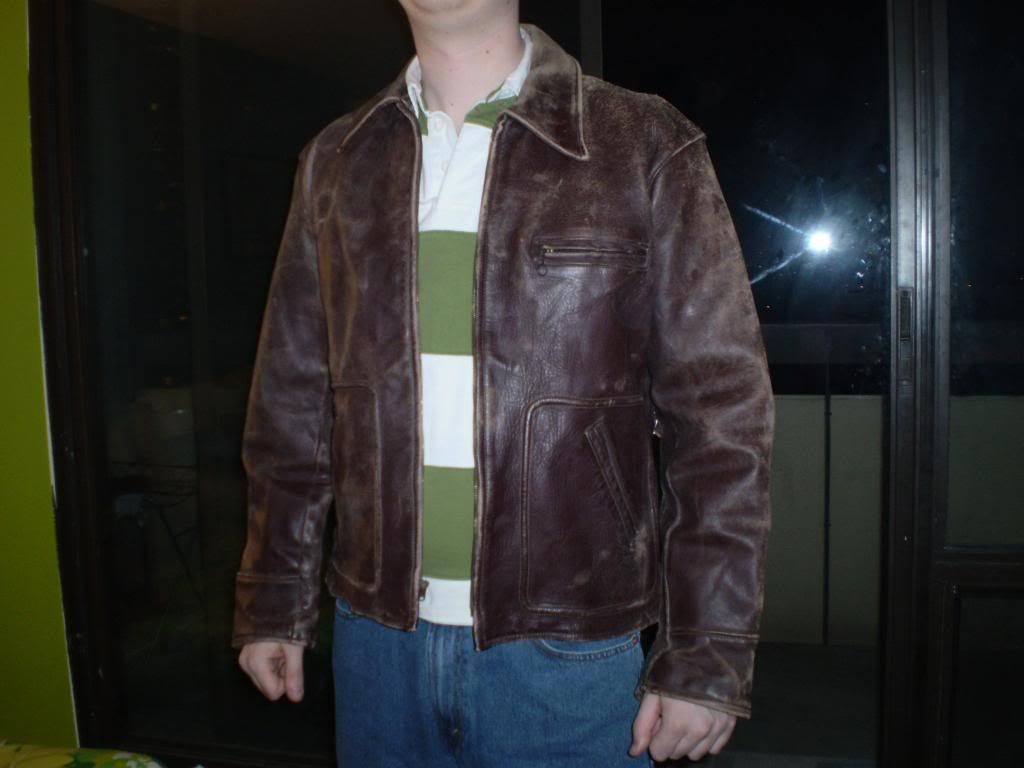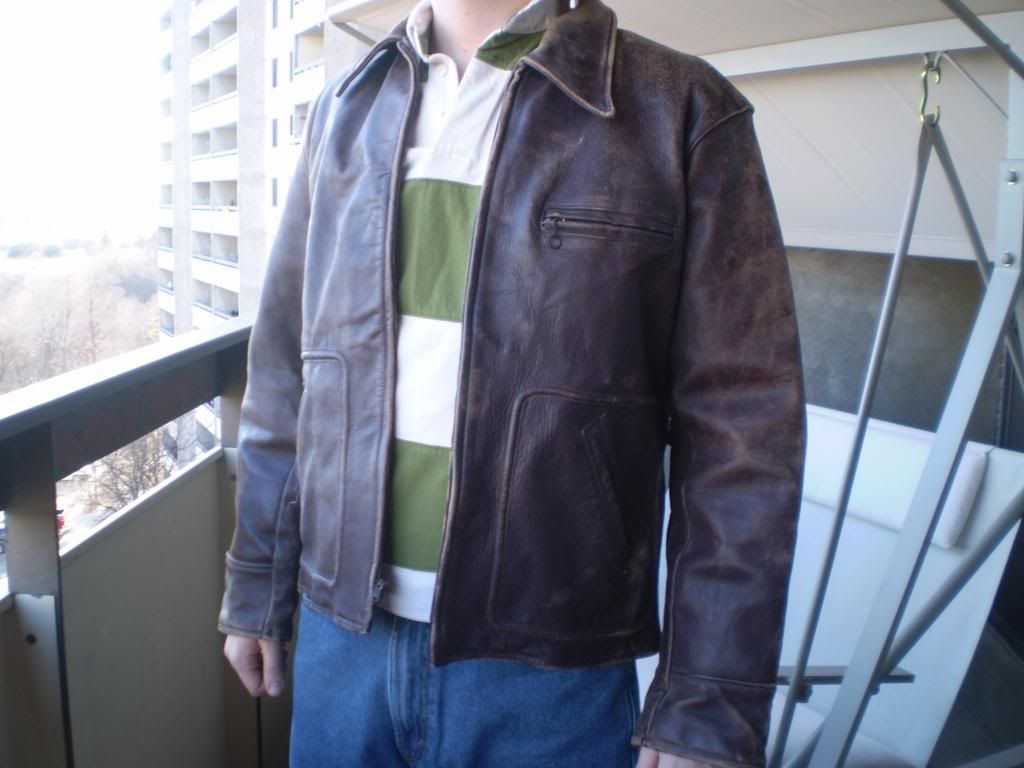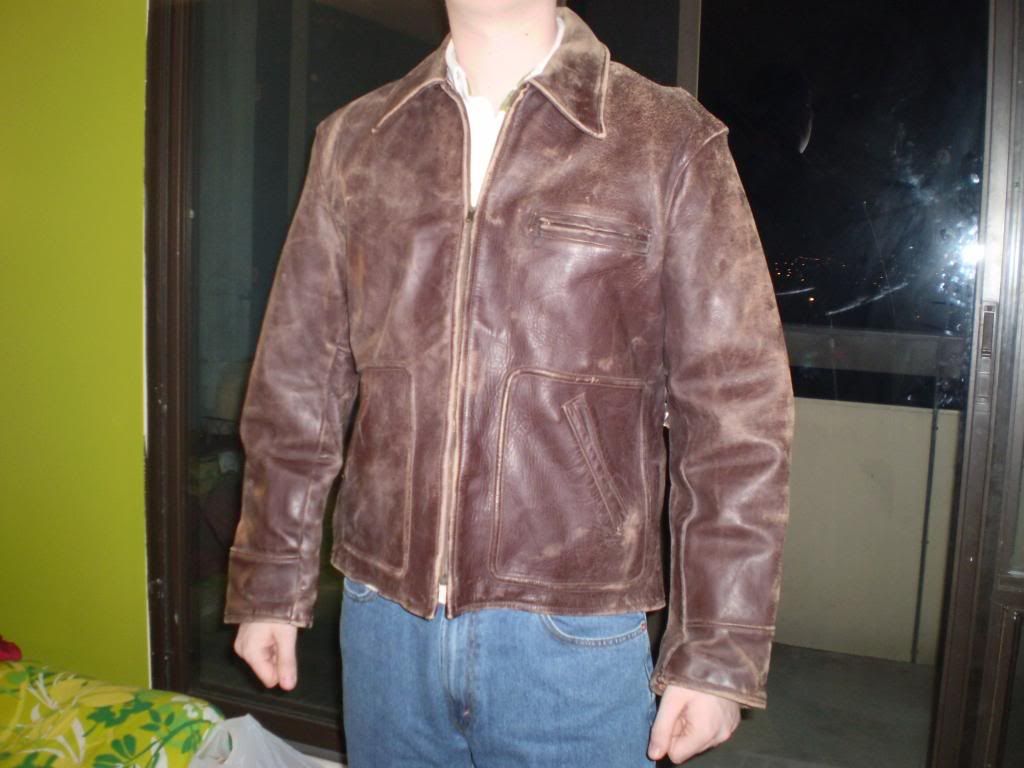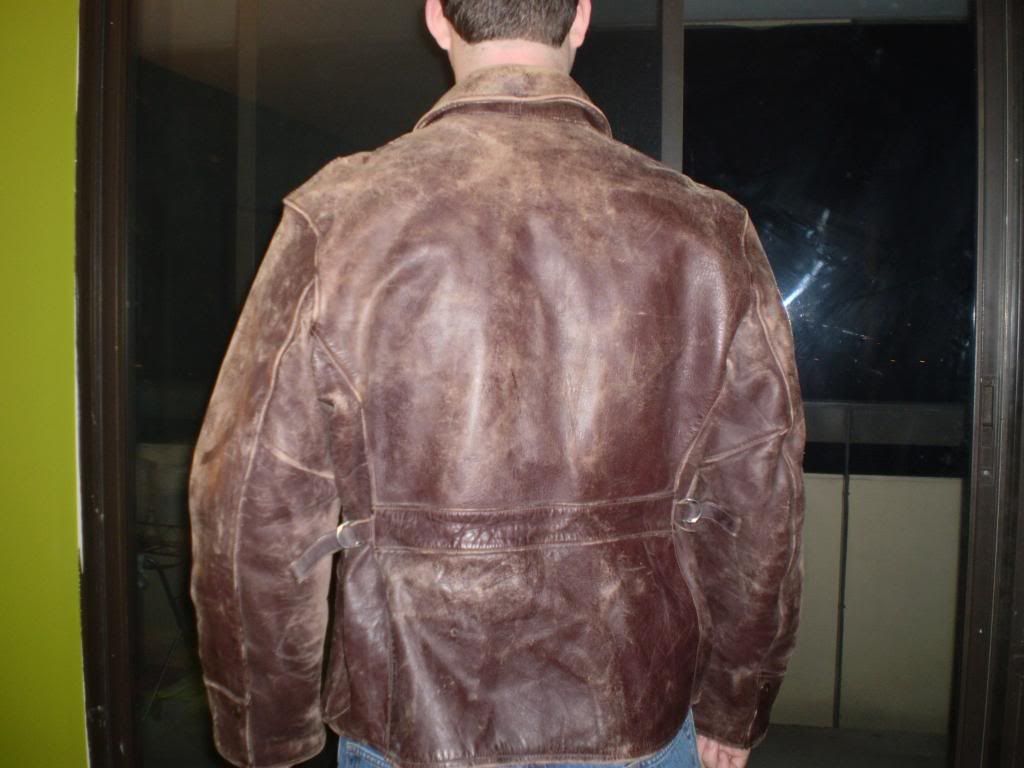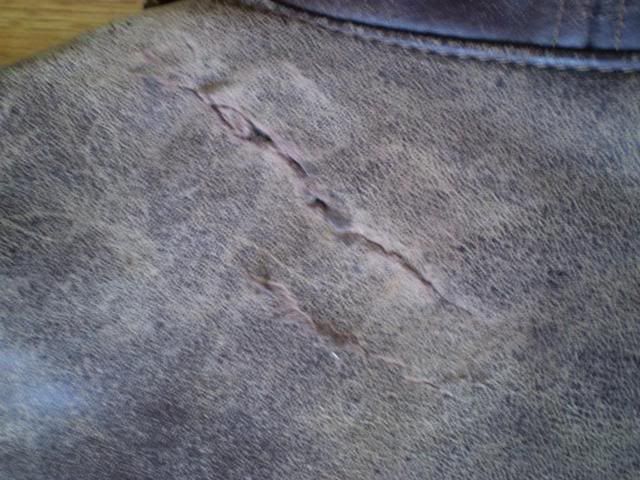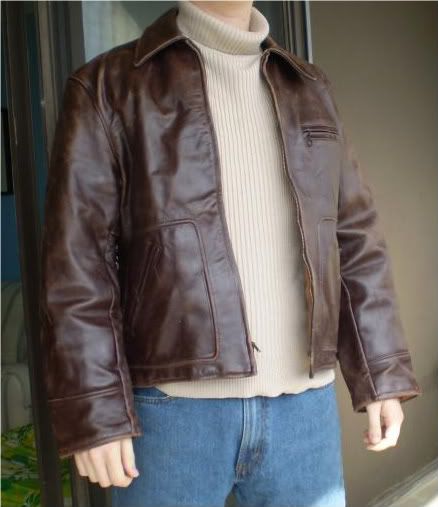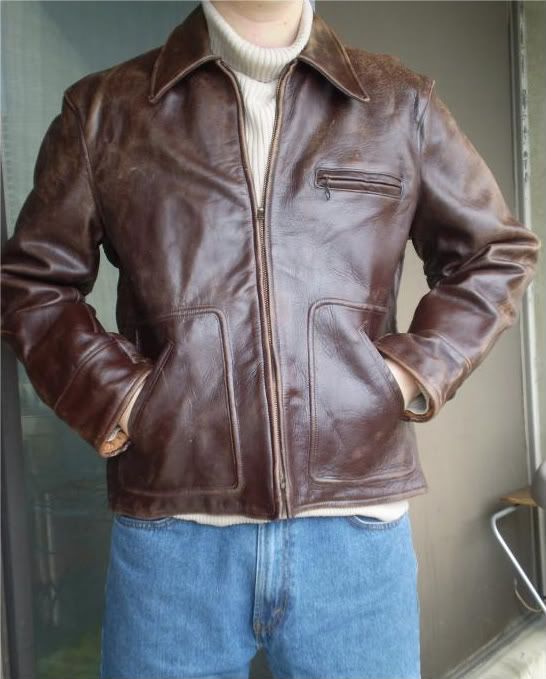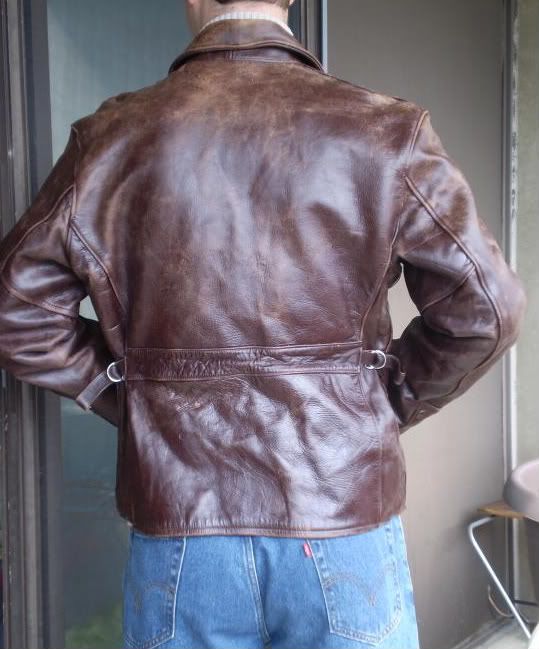Hawk_Eye
One of the Regulars
- Messages
- 240
- Location
- Toronto, Ontario
My interest in half-belts was inspired by pics of James excellent Aero. After looking the last few weeks, I stumbled upon this one in Toronto just today, made of front quarter horsehide, with a chocolate bar style conmar zip. The size tag is inside the sleeve strangely enough, tagged 48. The only issue is the pictured gouges in the horsehide on the back, they dont seem to be in any danger of enlarging but I would like to do something about them. They dont go all the way through the leather, maybe I can close them up with something? I've heard mention of something called shoe goo, would that help? Anyways, heres the pics, this is my first civilian styled vintage leather jacket.
